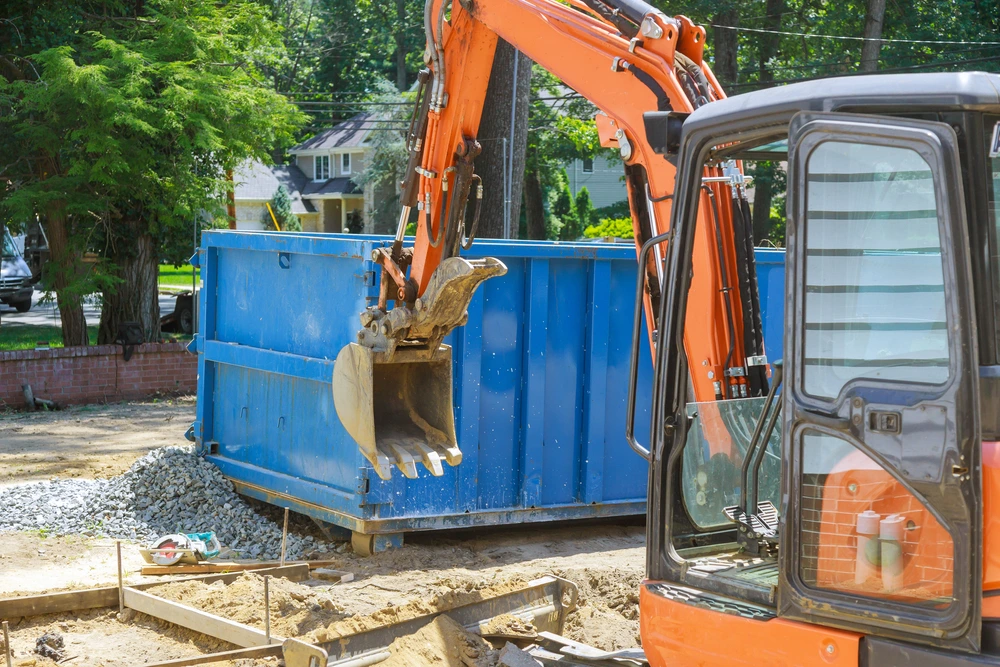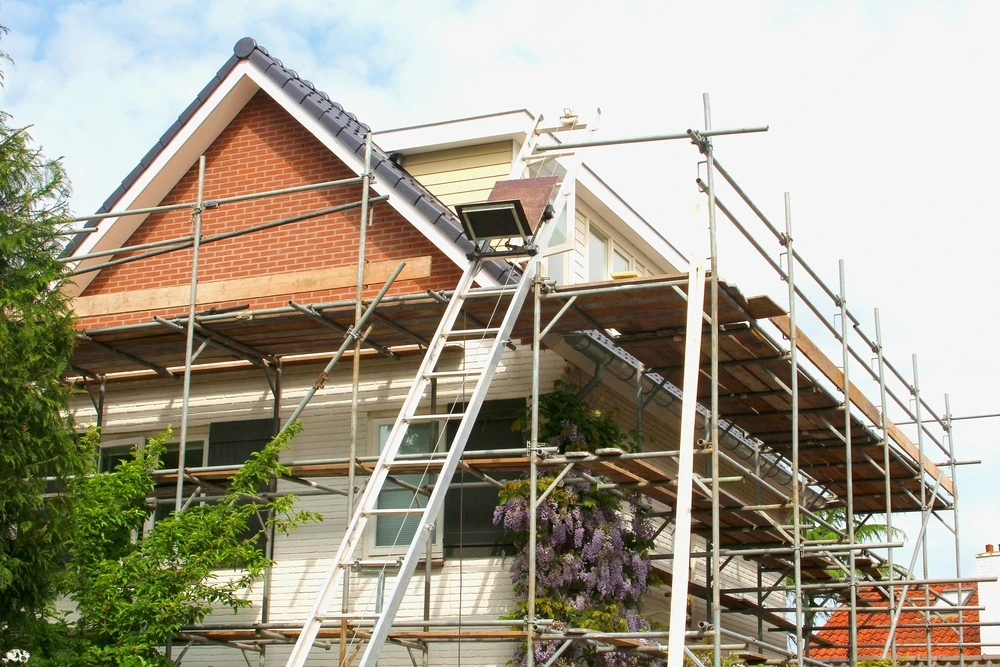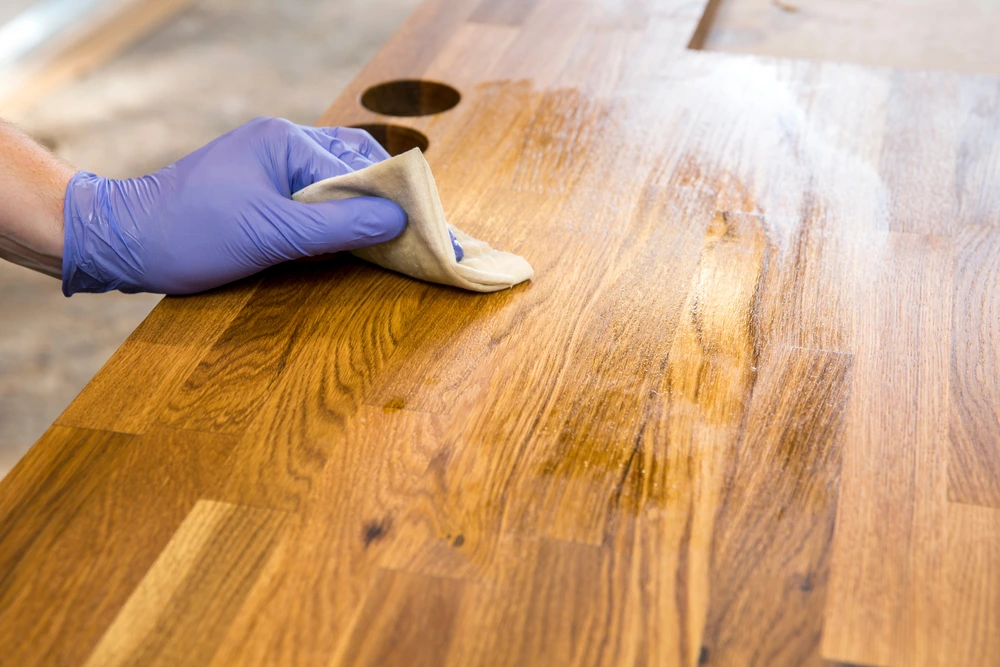Mudrooms serve a critical role in many homes, acting as a transitional space between the outdoors and the indoors. They offer a place to store coats, shoes, and other items, keeping your living spaces clean and uncluttered. When designing your mudroom, it’s essential to consider both functionality and aesthetics, ensuring the area complements your home’s decor while also meeting your organizational needs. Designing a new mudroom may also require a small 10-yard dumpster rental if you’re doing a complete renovation. Renting a local dumpster will help with the disposal of the debris.
Careful planning is necessary to create a mudroom that effectively manages the daily influx of items like backpacks, outerwear, and sports equipment. Different design styles can match your taste, whether you prefer a modern, minimalist look or a more traditional, cozy feel. Incorporating the right storage solutions, from built-in cubbies to freestanding coat racks, along with selecting durable flooring materials and accessories, will make your mudroom not only practical but also welcoming.
 Maximizing space and maintaining an organized mudroom comes down to implementing the right storage solutions. By strategically using built-ins, shelving, and versatile seating, you can create a mudroom that’s both functional and stylish.
Maximizing space and maintaining an organized mudroom comes down to implementing the right storage solutions. By strategically using built-ins, shelving, and versatile seating, you can create a mudroom that’s both functional and stylish.
 In designing your mudroom, accessories play a pivotal role in both function and aesthetics. Thoughtful selection of these items can transform the space into an organized and welcoming area.
In designing your mudroom, accessories play a pivotal role in both function and aesthetics. Thoughtful selection of these items can transform the space into an organized and welcoming area.
Key Takeaways
- A well-planned mudroom combines style with practical storage solutions.
- Durability and ease of cleaning are paramount for mudroom flooring choices.
- Thoughtful accessories add both function and personality to the space.
Planning Your Mudroom
When planning your mudroom, it’s essential to consider how the space will cater to your needs while making the best use of available square footage. Crafting an area that reflects both utility and style requires thoughtfulness in layout and design choices.Space Considerations
Your mudroom’s layout should optimize the existing space without making the area feel cramped. Here are some spatial guidelines:- Minimum dimensions: Aim for at least 5 feet in width to allow for comfortable passage.
- Storage solutions: Opt for vertical storage like hooks and tall cabinets to save floor space.
- Seating area: Include a bench or seating that integrates storage underneath.
Functionality and Flow
To maintain an efficient mudroom:- Consider traffic patterns and create a direct path to the main areas of the home.
- Ensure there is enough room for opening doors and accessing storage without obstruction.
- Drop-zone: A dedicated spot for frequently used items like keys and mail.
- Cleaning station: If space allows, include an area for a small vacuum or broom closet.
Design Styles
When you decide to transform your mudroom, choosing a design style that aligns with both your practical needs and aesthetic preferences is critical. Below, explore distinctive styles that can help you tailor your mudroom to be both functional and visually pleasing.Modern
For a modern mudroom, think clean lines and minimalistic design. You’ll want to incorporate streamlined storage solutions and maintain a clutter-free space. Consider built-in cabinets that hide coats and shoes, paired with open shelving for frequently used items. Use materials like polished metal, glass, or high-gloss finishes to achieve that sleek look. An excellent example of a modern mudroom idea is to add a memo board for family organization, integrating functionality with style.Rustic
A rustic mudroom brings warmth and charm, reminiscent of countryside living. It’s characterized by natural wood finishes, vintage furniture pieces, and a palette inspired by the outdoors. To achieve this style, opt for benches with storage underneath and incorporate hooks made of wrought iron or aged brass. Durable materials like stone or slate for flooring can enhance the rustic feel. You can find inspiration for rustic mudroom ideas that tackle both design and practicality.Traditional
In a traditional mudroom, elegance meets comfort. This style often features rich wood tones, ornate details, and classic patterns. To convey a sense of timelessness, include built-in seating with cushioned benches, beadboard walls, and a combination of hook and cubby storage. Wainscoting or crown molding can add architectural interest to the space. For traditional mudroom inspiration, think about including a hall tree to provide a structured area for coats and hats.Storage Solutions
 Maximizing space and maintaining an organized mudroom comes down to implementing the right storage solutions. By strategically using built-ins, shelving, and versatile seating, you can create a mudroom that’s both functional and stylish.
Maximizing space and maintaining an organized mudroom comes down to implementing the right storage solutions. By strategically using built-ins, shelving, and versatile seating, you can create a mudroom that’s both functional and stylish.
Built-in Cabinets
Built-in cabinets are your allies in keeping clutter at bay. They offer a seamless look that can be customized to your specific needs, providing ample space for coats, boots, and other outdoor essentials. Choosing cabinets with adjustable shelves to easily accommodate items of various sizes.Open Shelving
For items you need to access quickly, open shelving is a practical choice. This solution allows you to see where everything is at a glance, reducing the time you spend searching for your belongings. Balance form and function by using baskets or bins to organize smaller items on these shelves.Bench Seating with Storage
Enhance your mudroom’s efficiency with bench seating that includes storage. This multipurpose option not only gives you a place to sit while putting on shoes but also hides storage beneath. Choose a bench with cubbies or drawers to stow away items like shoes and sports equipment in an accessible yet orderly manner.Flooring Materials
When selecting flooring for your mudroom, durability and ease of cleaning should be your top priorities. The materials you choose must withstand moisture, mud, and heavy foot traffic without compromising on style.Tile
Tile flooring is a resilient option for mudrooms, known for its ability to resist water and stains. You have a wide range of choices including ceramic tiles, which are popular due to their hard-wearing nature and glazed finish that adds extra protection. For more texture and color variations, porcelain tiles are a superior choice as they’re crafted from a more refined clay and fired at higher temperatures, making them denser and less porous.- Advantages:
- High durability
- Water-resistant
- Easy to clean
- Considerations:
- Can be cold underfoot
- Grout requires maintenance
Vinyl
Vinyl flooring offers a practical and cost-effective solution for your mudroom. Modern luxury vinyl tiles (LVT) or vinyl planks can mimic the look of natural materials like stone or wood while providing a moisture-resistant and easy to clean surface. Sheet vinyl, another form, ensures a virtually seamless floor, which can reduce the risk of water seeping through gaps.- Advantages:
- Affordable
- Variety of designs
- Comfortable to walk on
- Considerations:
- Not as durable as tile
- Can be punctured by sharp objects
Wood
Hardwood can bring warmth and a traditional aesthetic to your mudroom, but it requires proper sealing and maintenance to withstand moisture. Engineered wood, composed of a plywood base topped with a hardwood veneer, offers a more stable option for moisture-prone areas.- Advantages:
- Timeless look
- Adds home value
- Considerations:
- Requires sealing
- Can be damaged by water over time
Accessory Ideas
 In designing your mudroom, accessories play a pivotal role in both function and aesthetics. Thoughtful selection of these items can transform the space into an organized and welcoming area.
In designing your mudroom, accessories play a pivotal role in both function and aesthetics. Thoughtful selection of these items can transform the space into an organized and welcoming area.
Hooks and Hangers
For your coats, scarves, and hats, choosing the right hooks and hangers is essential. Consider durable options that can support the weight of heavier outerwear. Wall-mounted hooks provide a space-saving solution, while a freestanding coat rack might suit your style and space requirements.- Recommended Materials: Stainless steel, wrought iron, or wooden hooks for a mixture of durability and style.
- Placement Tips: Space hooks at different heights to accommodate various garment sizes and ensure they are within easy reach.
Rugs and Mats
Rugs and mats are not only practical for keeping floors clean but also add a touch of comfort and design. A jute rug is a popular choice for its ease of cleaning and rustic appeal.- Ideal Choices: Waterproof mats, washable rugs, or textured mats that trap dirt effectively.
- Decor Tip: Select a rug that complements the color scheme of your mudroom for a cohesive look.
Lighting Fixtures
Proper lighting fixtures ensure your mudroom is bright and inviting. Consider a combination of overhead lighting and accent lamps to create a warm ambiance. For smaller spaces, wall sconces or flush-mount ceiling lights can be a perfect fit.- Lighting Layers: Combine ambient, task, and accent lighting for versatility and functionality.
- Brightness: Ensure bulbs are of appropriate wattage to illuminate the entire mudroom without glare.
Frequently Asked Questions
What are some creative mudroom storage solutions for small spaces?
In a small space, vertical storage solutions like wall-mounted hooks and floating shelves can be effective. Utilize hidden compartments under bench seating for an ingenious way to store shoes and seasonal items without cluttering the area.How can I design a mudroom with an efficient bench seating area?
When integrating a bench, ensure it’s at a comfortable height for sitting and tying shoes, typically around 18 inches. For efficiency, incorporate pull-out drawers or open storage bins beneath the bench to maximize the storage functionality.What are some modern design features that can enhance a mudroom’s functionality?
Modern mudrooms benefit from built-in lockers or cabinets for each family member and a combination of open and closed storage. Incorporate durable, easy-to-clean materials like tile flooring and include thoughtful storage such as lockers or cabinets for personalized space.How can I build an attractive and practical mudroom on a limited budget?
Select affordable materials and DIY where possible. Hooks, baskets, and repurposed furniture can be utilized to create an organized mudroom without the need to spend on expensive cabinetry.What items are essential for keeping a mudroom organized and user-friendly?
Include a mix of hooks for coats and bags, shelves for shoes, and bins or baskets for small items like gloves and hats. A designated spot for each category of items helps maintain an orderly space.Can you provide tips for integrating a laundry area into a mudroom design?
Ensure your mudroom has space for a washer and dryer stacked or side-by-side. Concealment solutions, such as cabinets or curtains, can hide appliances. Include a countertop for folding clothes and storage for laundry supplies to maintain a tidy appearance.RECENT BLOGS
 How to Get Rid of Used Cooking Oil: A Comprehensive Guide to Recycling, Repurposing, and Proper Used Cooking Oil Disposal
How to Get Rid of Used Cooking Oil: A Comprehensive Guide to Recycling, Repurposing, and Proper Used Cooking Oil Disposal
Date: April 22 ,2025
 Mini Dumpsters vs. Full-Sized Dumpsters for Contractors: Choosing the Right Fit
Mini Dumpsters vs. Full-Sized Dumpsters for Contractors: Choosing the Right Fit
Date: March 06 ,2025
Our Reviews
LATEST BLOGS










